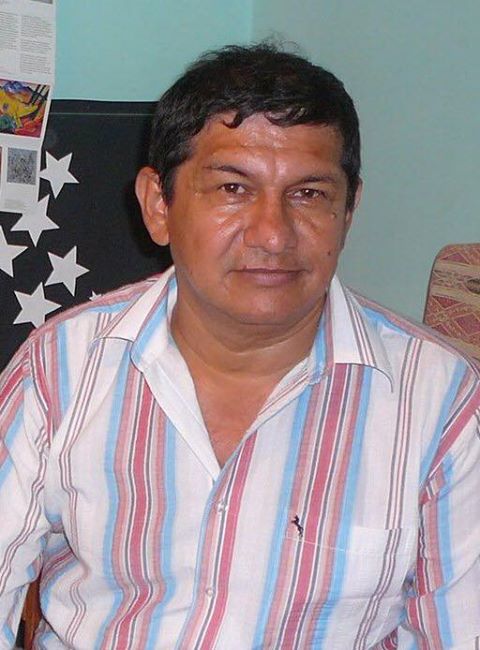Selection, introduction and translation
from Spanish by Elisa Taber

Miguelángel Meza is a Guaraní poet and cultural promoter born in Caacupé in 1955. He has contributed to numerous anthropological and linguistic research studies, as well as translations. He also worked for the National Ministry of Culture of Paraguay. He has published the books Ita ha’eñoso (1985), Perurima rapykuere (1985 and 2001), Purahéi (2001 and 2011), Chipi Gonzales guahẽrã (2006), Maleõ (2007), Perurima pypore (2010), and Arami mburukujaguýre (2012). He is the founder of the cartonera press Mburukujarami Kartonéra, with which he has published numerous titles authored by him and others.
Ita ha’eñoso is a bilingual, Mbya Guaraní and Spanish, collection of poems by Miguelángel Meza. Mbya Guaraní is distinct from Jopara, a variant of Spanish-inflected Guaraní spoken widely in Paraguay, a bilingual country, Spanish and Jopara. This, his first book, published thirty-five years prior, is a twin collection to Ayvu Rapyta, the Mbya Guaraní sacred myths of origin transcribed and collected by Paraguayan ethnologist León Cadogan. He writes a self-reflexive response, not retelling, of the myths; therefore, while his images, symbols, and metaphors refer to an ancestral culture, they are also very much his own. Meza’s words are signifiers without hierarchy that mean literally within the lyric structure, the first words by a new author, and connote literally Mbya Guaraní cosmological narratives. In essence both are the same as the word “ñe’ë,” which literally translates “word-soul.” The origin of the world is not announced by the materialization of the hummingbird, but by a voice that mournfully asserts, “I appear.”
Since Ita ha’eñoso (1985) Meza has published six collections of poetry and short fiction. However, Ita ha’eñoso remains a seminal work in Guaraní poetry because it marks the transition from oral and communal to chirographic and authorial literature. He makes an attunement to both an authorial style and a millenary culture possible, while they jointly point to another way of conceiving the world. The counterintuitive way that this poet renders the individual from the communal is reminiscent of the Paraguayan embroidery technique, ñandutí. Ñandutí means spider’s web in Guaraní. Threads extracted from, rather than woven into, a fabric trace a geometric pattern. Meza imitates this practice by claiming authorship through his lyric synthesis of a communal narrative. Meza seems to say through those that came before him: identity lies in erasure, not mark-making.











MORE ABOUT GUARANI POETRY
Poetry by Susy Delgado
ABOUT THE TRANSLATOR

Elisa Taber is an Argentine writer and anthropologist. She explores the ontological poetics of Amerindian literature. Her stories and translations are troubled into being, even when that trouble is a kind of joy. Her writing appears in specialized media, such as 3AM Magazine, Colleex Open Formats, and Minor Literature(s). She is the recipient of two Library of Congress Hispanic Division Huntington Fellowship and a Janey Program for Latin American Studies Fellowship; and holds an MA in anthropology from The New School for Social Research. She is co-editor of Slug, a journal that bridges the gap between literature and ethnography, and editor of a Guaraní poetry issue for Words without Borders. Her books include 300 and 28 (Oakland: Gauss PDF, 2019) and An Archipelago in a Landlocked Country [Minneapolis:11:11 Press, (forthcoming) 2020]. Elisa was born in Asunción, and lives between Buenos Aires and New York.
